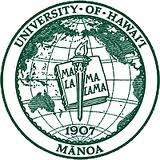(Honolulu)– UH-Mānoa’s College of Tropical Agriculture and Human Resources (CTAHR) and its project partners were recently awarded a four-year, $6 million competitive grant by the U.S. Department of Agriculture’s National Institute of Food and Agriculture to increase Hawai‘i’s energy security by creating locally produced renewable energy.
The project will seek to develop high-yielding biofuel feedstocks that are economically viable and sustainable; to establish advanced local biofuel production processes; and to guide development of an advanced biofuel supply chain. CTAHR faculty from the departments of Molecular Biosciences and Bioengineering, Tropical Plant and Soil Sciences, and Natural Resources and Environmental Management are partnering with researchers from Oregon State and Washington State universities, and with ZeaChem, Hawaiian Commercial and Sugar Co., and Hawai‘i BioEnergy LLC.
CTAHR’s Dr. Andrew Hashimoto, principal investigator, expects this project to provide Hawai‘i and other tropical/subtropical regions with information vital to developing sustainable renewable energy. “This is a timely and essential issue,” he said. “Collaboration is key, as we all bring our diverse strengths to the table for this subject of importance to Hawai‘i, the nation, and the Asia-Pacific region.”
The project will examine the use of fast-growing tropical grasses such as banagrass, sweet sorghum, energycane (a relative of sugarcane), and Napiergrass–pearl millet crosses for biofuel production, including testing and modifying harvesting and storage techniques for the feedstock grasses and optimizing energy yields. It will also develop ways to assess the sustainability of renewable energy production in Hawai‘i, focusing on investigating the development of a rural-based decentralized pre-processing system.
Hawai‘i presently meets more than 90% of its energy requirements through the use of imported fossil fuels and, despite almost non-existent heating needs, has the nation’s highest energy costs. According to Hawaii Energy Statistics, between $3.4 billion to $5.4 billion was spent annually in the state for fossil fuel between 2005-09. This high price burden is matched by the equally problematic lack of fuel security inherent in such overwhelming dependence upon outside sources.
Not only the state’s own energy needs are at stake: Because of Hawai‘i’s strategic military importance, the U.S. Navy has a vital interest in the development of biofuels that can be produced locally to meet its transportation needs. The Navy has unveiled its Great Green Fleet Initiative, which aims to use 50% renewable energy by 2020 for its ships and ground transport, thus creating a very important market for locally produced biofuels.

